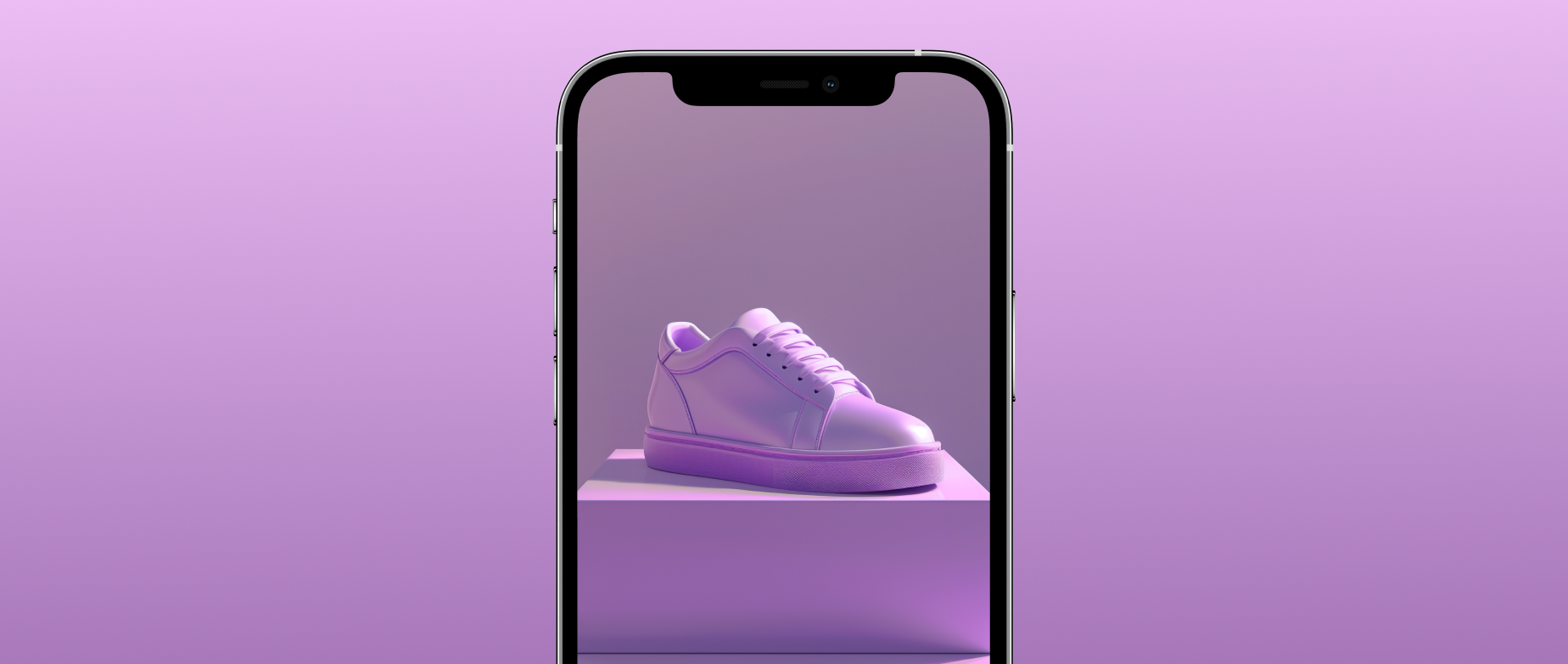Our view at Stack - Shopify has just about everything you need if you're looking to sell online. It excels with unlimited products, user-friendly setup, and 24/7 support. It offers 6,000+ app integrations, abandoned cart recovery, and shipping discounts up to 88%. Plus, it allows selling both online and in-person, scaling as your business grows.

If you ever watched the 1995 film Clueless and dreamed of having Cher’s wardrobe software that let her pick out her daily outfits, take heart. Augmented reality fashion has now made this a reality. The technology provides a way for customers to “try on” products while shopping online.
But that’s only part of what augmented reality can do for fashion brands. Learn more about how it can enhance both the in-store and online shopping experience and why it has the potential to solidify brand loyalty.
What is augmented reality?
Augmented reality (AR) merges computer-generated 3D content with real life. Any electronic device (such as a phone, tablet, or laptop) with a camera can provide this experience via AR software.
The software analyzes the camera’s video stream to identify and track the position of the user. With this information, it projects 3D virtual content by overlaying digital images onto the physical world. For the user, the rendered image on the screen will seem like a part of their real-world environment.
In the fashion industry, one way brands can employ augmented reality is to project their digital garment on a customer’s real-time image, providing virtual try-ons of clothes, accessories, and shoes.
A brief history of augmented reality
Augmented reality as a concept dates back to 1968 when Ivan Sutherland, a computer scientist and Harvard professor, created the first head-mounted display. Users who wore the display would see computer-generated graphics. Other AR innovators, like researcher and artist Myron Kruger, blurred the lines between reality and simulation by creating interactive AR art. However, there was no distinction between augmented reality and virtual reality at the time.
It wasn’t until 1990 that Boeing researcher Tim Caudell coined the term “augmented reality” to differentiate it from the fully immersive experience of virtual reality. In this decade, NASA and the US Air Force Research Lab used AR technology. Today, AR technologies have left the lab and have many uses, from art to gaming to social media platforms.
How is AR used in the fashion industry?
The fashion industry has embraced AR in the following ways:
Virtual try-on
Online stores are using AR to facilitate virtual try-ons, recreating the experience of shopping in a brick-and-mortar store. Unlike the in-store experience, virtual fitting rooms allow customers to try on clothes whenever they want, even outside business hours.
While product photos, descriptions, and customer reviews can help customers make more informed purchasing decisions, a virtual fitting room lets them envision themselves in the clothing item more clearly, adding an extra dimension to the customer experience.
Fashion shows
AR solutions have made fashion shows more accessible. What was once only for those working in the fashion industry is now available to a global audience.
With AR fashion shows, models walk in front of green screens before they hit the runway. AR software then streams the footage to give online audiences a 360-degree, front-row view of the event—no matter where they are.
Runway collections
As fashion brands turn their runway collections into digital content, fashion enthusiasts can interact with the virtual garments before they are available for purchase and see what they look like on their bodies. This can give customers a way to connect to luxury brands that are hard to access.
Brand narrative
AR tools let fashion brands tell their stories in new ways, which can help them establish a connection with existing and new customers and deepen customer loyalty through memorable experiences.
For example, luxury brand Cartier partnered with Snap to use AR technology to immerse consumers in 1917, the year it launched its Tank watch line. The campaign walked viewers through significant moments in the company’s history, showcasing the evolution of the product throughout the century. The watch sat at the bottom of the screen, updating with each time jump. When users reached the present day, they could virtually try on the new Tank Française model.
AR mirrors
AR mirrors, or smart mirrors, impose images of a chosen product onto the onlooker’s reflection. Virtual clothing can be an alternative for in-person shoppers who don’t like using dressing rooms or who want to try on multiple items without changing repeatedly. Not only do AR mirrors provide an immersive experience, butthey can also recommend clothing based on body type and preferences.
An example of AR in the fashion industry
Global brand Rebecca Minkoff is a fashion house specializing in handbags, accessories, and clothing that has welcomed technology, including augmented reality. “When people have the intent to shop without physically being able to touch and see a product, the more options you can give them to create that confidence is helpful,” says Sarah Sheldon, Rebecca Minkoff’s senior director of global ecommerce and digital, in an interview on the Shopify Masters podcast.
The brand uses 3D modeling and AR to portray the most realistic image of its products so that shoppers can get a better look at the textures and shapes of a garment, so they feel confident they understand the product’s physical attributes before they make a purchase.
For the brand, integrating AR has been successful; those who used its 3D modeling tools were 44% more likely to place an item in their shopping cart in comparison to shoppers who didn’t. Additionally, those who used augmented reality to visualize a product in their physical environment had a 65% chance of purchasing the product.
“We’re always looking for exciting ways to connect and inspire shoppers with our new designs,” says Uri Minkoff, cofounder and CEO of the brand. “Now with video on our Shopify Plus ecommerce store, Rebecca Minkoff shoppers will see our collections brought to life.”
Augmented Reality FAQ
What is the difference between augmented reality and virtual reality?
Virtual reality uses a headset to show a computer-generated environment on the headset’s screen that a user can navigate, completely separate from what’s actually in front of them. Augmented reality, however, takes digital images and superimposes them over the user’s physical world in real time.
What is augmented reality fashion?
Augmented reality fashion is when fashion retailers implement AR tools in their shopping experience. This can include AR try-ons, smart mirrors, and livestreamed fashion shows.
Which fashion brands leverage augmented reality?
Several fashion brands have adopted these tools, including Rebecca Minkoff, Dior, and Warby Parker.
If Shopify is of interest and you'd like more information, please do make contact or take a look in more detail here.
Credit: Original article published here.
